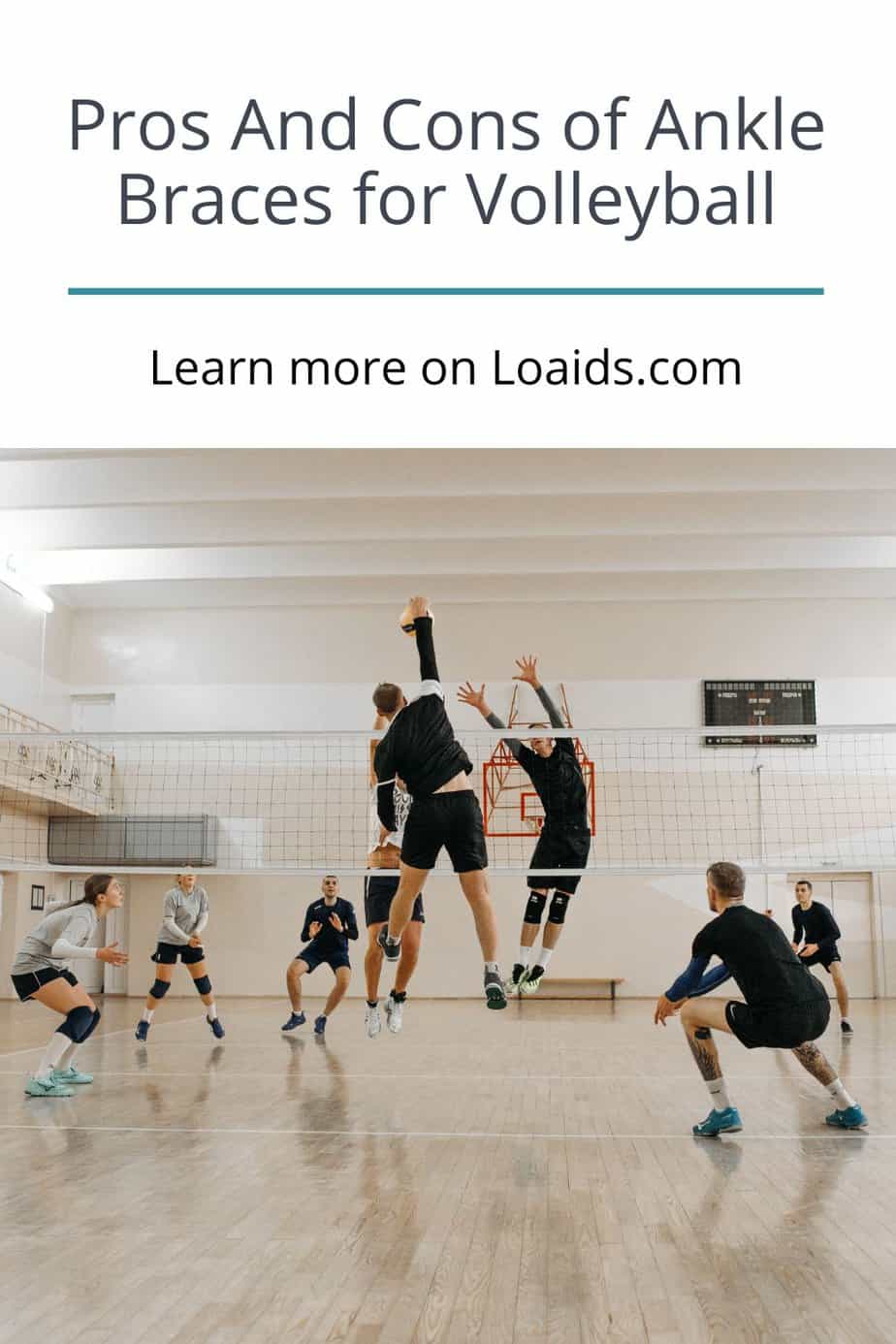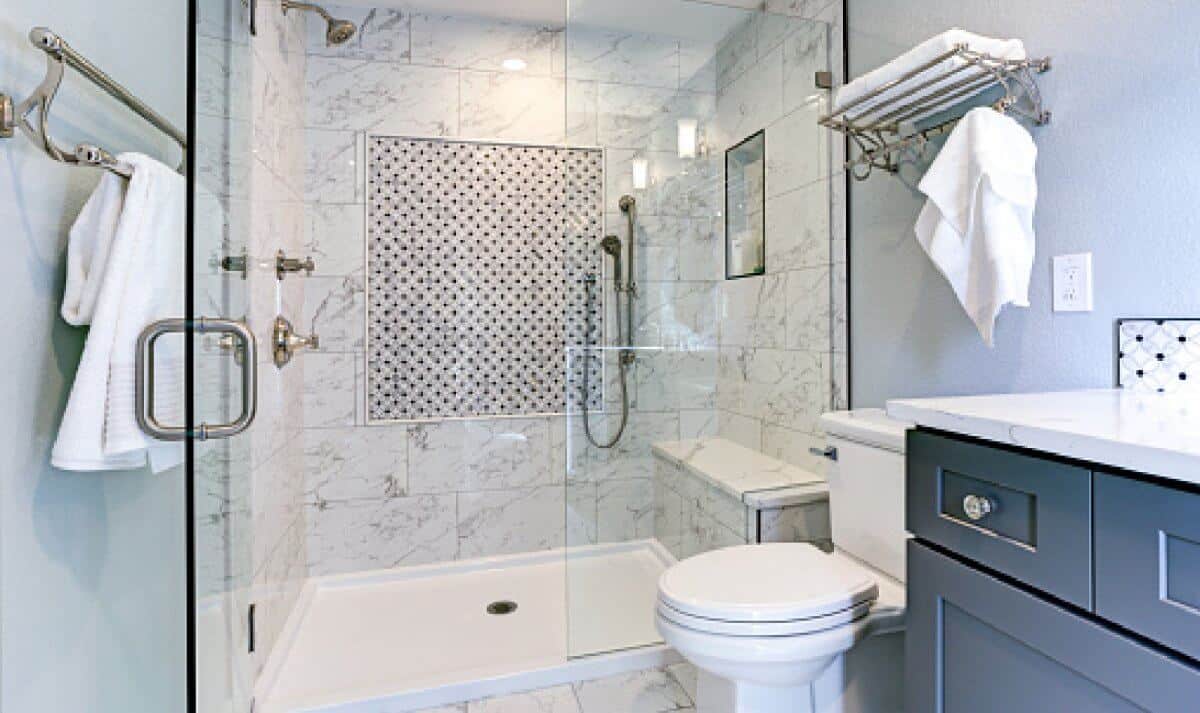Are you curious about the pros and cons of ankle braces for volleyball?
When I was playing volleyball, I heard a lot of different opinions from coaches and team players about wearing braces to reduce the risk of injury.
So, I researched how effective ankle braces are for athletes and people playing sports, and I’m here to share my findings with you.
Keep reading to learn more about volleyball ankle braces and their pros and cons.
Table of Contents
Quick Summary
- An ankle brace is an orthopedic garment that limits certain movements and stabilizes the ankle when injured.
- Ankle sprains are one of the most common injuries among athletes and non-athletes, but bracing can reduce the incidence of ankle injuries in athletes and non-athletes.
- It’s not a good idea to wear a volleyball ankle brace for a prolonged period because it can affect the ankle muscles and tendons.
What Are Ankle Braces Used For?
Before getting to the pros and cons of ankle braces for volleyball, let’s establish what ankle braces are and what types exist.
An ankle brace is a piece of garment that you wear around your ankle to provide external support, protection, and stability for the ankle joints, ligaments, and tendons.
Some people wonder, “Do ankle braces make your ankles weaker?” This is a concern often raised, but it’s essential to understand the primary functions of these braces.
A brace also limits certain ankle movements to prevent you from worsening an injury during recovery and prevent foot inversions. And it can help with maintaining balance.
In general, people usually wear ankle braces for one of the following reasons:
- Ankle sprains/ injuries.
- Pain relief from plantar fasciitis, tendonitis, and other acute ankle injuries.
- Chronic ankle instability.
- Recovery from ankle surgery.
- Playing high-intensity contact sports with a high risk of ankle sprains/acute ankle injuries.
But ankle braces come in several types, depending on what condition they’re designed to treat. So, let’s talk about the different types of ankle braces.
CHECK: How to Put on an Ankle Brace
4 Common Types of Ankle Braces
It’s possible to find a wide variety of ankle braces online and in drugstores. But not all of them are suitable for volleyball players or athletes:
1. Compression Sleeve Braces
This type is best for treating mild sprains and tendonitis. It’s made of lightweight material that supports the ankle joints, provides warmth, and reduces swelling.
2. Lace-up Ankle Braces
These semi-rigid braces wrap around the ankle to limit ankle motion from side to side or up and down. They’re best for mild to moderate sprains.
3. Hinged Braces
These semi-rigid braces prevent your ankle from moving side-to-side. Unlike lace-up braces and compression braces, this type is made to fit either the left or right foot.
4. Rigid Braces
It’s made from hard plastic that extends up the ankle and secures around the ankle with Velcro. It’s best for serious ankle injuries or stress fractures.
Most professional athletes and contact sports players wear lace-up braces or compression sleeve braces. But why do they do it, and what are the benefits? Let’s find out!
What Are the Benefits of Wearing Ankle Braces for Volleyball?
Ankle sprains are among the most common injuries, especially in people that play volleyball or other high-intensity sports. But not only athletes are at risk of recurrent ankle sprains.
According to WebMD, every day 25, 000 people in the United States sprain an ankle, and over 1 million visit the ER for ankle-related injuries. (1)
So, what are the benefits of ankle bracing? You’d be surprised by what researchers have to say.
#1 Prevention of Ankle Injury
In volleyball, the rates of ankle sprains are high because of all the jumping, blocking, and serving. It’s easy for another play to step on your ankle accidentally, or you can land badly.
So, the main pro of ankle braces is reducing the chances of an ankle injury in high-risk sports by preventing ankle twisting or inward rotations.
According to a study on high school volleyball players, braces made a huge difference for players with no previous ankle injuries. (2) But it had little effect on players with a history of an ankle injury.
Another study also points out that bracing reduces the incidence of acute ankle injuries in high school basketball players with or without previous injuries. (3)
And you can check this video to see how volleyball teams use ankle braces to prevent injuries.
Still, ankle bracing doesn’t seem to affect the severity of the injury. So, the brace won’t protect against severe sprains or fractures.
#2 Ankle Protection/Stability
Do you know that frequent sprains can lead to chronic instability? And chronic ankle instability can ruin your athletic career because it impacts your balance.
Since braces limit dangerous ankle motions, they offer some level of protection against aggravating current/past injuries in the weeks after the initial sprain.
And according to a study, “The application of ankle braces is an effective method for the prevention of recurrent ankle sprains.” (4)
Braces aren’t only good for preventing injuries among athletes. People with recurrent ankle injuries can improve their ankle health by wearing a suitable brace.
#3 Speed Up Recovery
The usual treatment for an initial ankle injury is RICE (Rest, Ice, Compression, and Elevation), which aims to reduce inflammation, swelling, and pain.
Unfortunately, it can take up to two weeks to heal a minor sprain completely. And severe sprains can keep you off your foot and the team for a few months.
However, bracing can shorten the recovery period because it stabilizes the injured area and keep it from worsening.
#4 Pain Relief
I’ve got a long history of ankle problems, so whenever the old pains flare up, bracing is one of the quickest ways to reduce the discomfort.
Braces compress the injured area, keeping it warm and increasing blood circulation. All of these are beneficial for pain reduction.
Moreover, bracing also reduces the development of scarring and can improve injury-related outcomes.
#5 Confidence
Bracing can improve your confidence when playing volleyball or other high-risk sport because you’ve got an extra awareness of where your ankle joints are.
But are there any negative effects of wearing a brace among the active population? You’d be surprised!
What Are the Drawbacks of Wearing Ankle Braces for Volleyball?
While braces can help with recurrent ankle sprains, you should keep a few things in mind before you start wearing one full-time.
#1 Weak Ankles
Bracing limits dangerous ankle motions to prevent injuries or prevent a pre-existing sprain from worsening. However, restricting ankle joint movements has its drawbacks.
The biggest one is that you can weaken your ankle if you wear the brace daily because the joints, tendons, and ligaments can’t move normally.
Fortunately, not all braces restrict ankle motion. Some hinged braces allow full up and down movement and move with the ankle to provide support and stability.
#2 Knee Injuries
While braces are beneficial for the prevention of ankle sprain, they can affect your knee joints. According to studies, wearing a brace increases the twisting force of the knee by about 10%. (5)
The more stress you put on your knee joints, the greater the possibility of knee ligament injury. But why are you at risk of knee ligament injury when wearing an ankle brace?
When you jump, your ankles, knee, and hips absorb the shock of landing. However, bracing limits movement, so your ankle can’t absorb the landing shock well.
And that’s what puts extra force on your knee and can cause knee injuries in the long run.
#3 Less Mobility/Lower Jump
Depending on your injury and the type of brace you wear, you can’t move about as freely as before. And restricted mobility affects your athletic or team performance.
Moreover, some studies indicate that wearing a brace can lower a bit the height of your vertical jump. (6)
That can be a big con of ankle braces for volleyball because volleyball is a sport where jumping as high as possible is vital. And even a slight reduction in jumping height isn’t good news.
#4 Skin Irritation
Finally, it takes time to get used to moving around with an ankle brace, and you can experience initial discomforts, such as itching, rashes, or skin irritation.
So, knowing these pros and cons of ankle braces for volleyball, should you wear a brace when playing volleyball?
Should You Wear a Brace When Playing Volleyball?
Weighing the pros and cons of ankle braces for volleyball, it’s better to wear braces when playing or training if you have a history of ankle problems.
The brace will stabilize your ankle, prevent it from making dangerous ankle motions, and reduce the risk of ankle sprains.
Ankle bracing is also an excellent option for players in high-risk positions who fear a potential injury or have chronic ankle issues.
However, bracing doesn’t have a lot of benefits for people without a history of ankle problems. And it won’t affect the severity of the sprain if you get injured during the athletic season.
So, are there any alternatives to ankle braces for volleyball to reduce the frequency of ankle sprains? Let’s find out!
Alternative Methods to Protecting Ankles When Playing Volleyball
Ankle bracing is one option for preventing recurrent ankle injuries in volleyball players. Other options include:
- Ankle strengthening exercises
- Proprioceptive training, which includes stability and balance exercises
- Training your jumping/landing technique to ensure you land without injury
- Preventive exercise programs, which can be a part of your dynamic warmup routine
Watch this video to see some proprioceptive exercises for beginners.
But what about ankle taping? According to research, ankle braces are a bit more effective than athletic taping because braces offer more support and stability. (7)
And I’ve got a couple more tips to ensure you get the most out of ankle bracing when playing volleyball or other high-risk sports.
5 Tips for Wearing Ankle Braces for Playing Volleyball
Wearing an ankle brace when playing volleyball can turn
#1 Choose the Best Ankle Brace for Playing Volleyball
The developments in brace technology have produced numerous ankle braces. But not all of them are created equal.
For volleyball, you need a lightweight ankle brace made from breathable material that will provide the proper support without restricting your movements.
#2 Don’t Forget to Clean the Ankle Brace
You should clean your brace a couple of times per week to remove grime, dirt, and bacteria. Improper maintenance can lead to skin infections, rashes, and general discomfort.
#3 Pick the Right Shoe Type
Athletic shoes are one of the best choices when wearing an ankle brace because they don’t put much pressure on the ankle bones. You should never wear a brace without shoes!
Keep in mind that you may have to get your athletic shoes altered to fit some types of ankle braces.
#4 Consult an Orthopedist
If you’re unsure what types of ankle support suit you, it’s best to consult an orthopedist, especially if you have a history of an ankle injury.
#5 Rehabilitation Program
As a specialist from Mayo Clinic says, “After experiencing an ankle injury, it is important to consider rehabilitation as part of your treatment plan.” (8)
Badly healded ankle injuries can lead to future problems and put an end to an athletic career. So, it’s best to consider a rehabilitation program even for minor ankle sprains.
FAQs
1. What Do Ankle Braces Do In Volleyball?
Ankle braces in volleyball can reduce abnormal ankle motions, lowering the frequency of ankle sprains and other ankle-related injuries.
2. Do Ankle Braces Make You Jump Higher?
Braces can’t improve your vertical jumping abilities. And since they limit certain motions, jumping as high as usual can be harder.
3. Should Volleyball Players Wear Ankle Braces?
Volleyball players should wear ankle braces if they have a history of an ankle injury and want to reduce the risk of ankle sprains.
Conclusion
Ankle braces for volleyball can reduce the frequency of ankle sprains and other ankle-related injuries during games and training.
However, bracing is not enough to protect you against severe ankle injuries. You should include proprioceptive exercises in your routine to strengthen your body and improve your balance.
And don’t forget about rehabilitation programs to ensure your ankle has the chance to recover properly from previous injuries.

What do you think about the pros and cons of ankle braces for volleyball? Do you wear one when playing sports, or do you use an alternative method? Share your experience in the comment section.
Resources:
1. Saling J. Ankle Injuries: Causes and Treatments [Internet]. WebMD. WebMD; 2010. Available from: https://www.webmd.com/fitness-exercise/guide/ankle-injuries-causes-and-treatments
2. Frey C, Feder KS, Sleight J. Prophylactic Ankle Brace Use in High School Volleyball Players: A Prospective Study. Foot & Ankle International. 2010;31:296–300.
3. McGuine TA, Brooks A, Hetzel S. The Effect of Lace-up Ankle Braces on Injury Rates in High School Basketball Players. The American Journal of Sports Medicine. 2011;39:1840–8.
4. Fuerst P, Gollhofer A, Wenning M, Gehring D. People with chronic ankle instability benefit from brace application in highly dynamic change of direction movements. Journal of Foot and Ankle Research. 2021;14.
5. Bracing & Biomechanics: Ankle bracing & secondary injury risk – Part 1. [Internet]. ACRO Physical Therapy & Fitness. Available from: https://www.acropt.com/blog/2017/8/21/bracing-biomechanics-ankle-bracing-and-increased-injury-risk
6. Henderson ZJ, Sanzo P, Zerpa C, Kivi D. The Effects of Ankle Braces on Lower Extremity Electromyography and Performance During Vertical Jumping: A Pilot Study. International journal of exercise science [Internet]. Berkeley Electronic Press; 2019;12:15–23. Available from: https://www.ncbi.nlm.nih.gov/pmc/articles/PMC6355133/
7. Taping and Bracing [Internet]. Available from: https://readtheory.org/wp-content/uploads/2020/04/9th-Grade-Tapping-and-Bracing-All.pdf
8. Brace for it: When to use an ankle brace – Mayo Clinic Health System [Internet]. Mayoclinichealthsystem.org. 2020. Available from: https://www.mayoclinichealthsystem.org/hometown-health/speaking-of-health/brace-for-it-when-to-use-an-ankle-brace






This is good to know since my daughter plays volleyball and she hurt her ankle recently. It’s such a bummer since so much of the game she’s putting pressure on it.